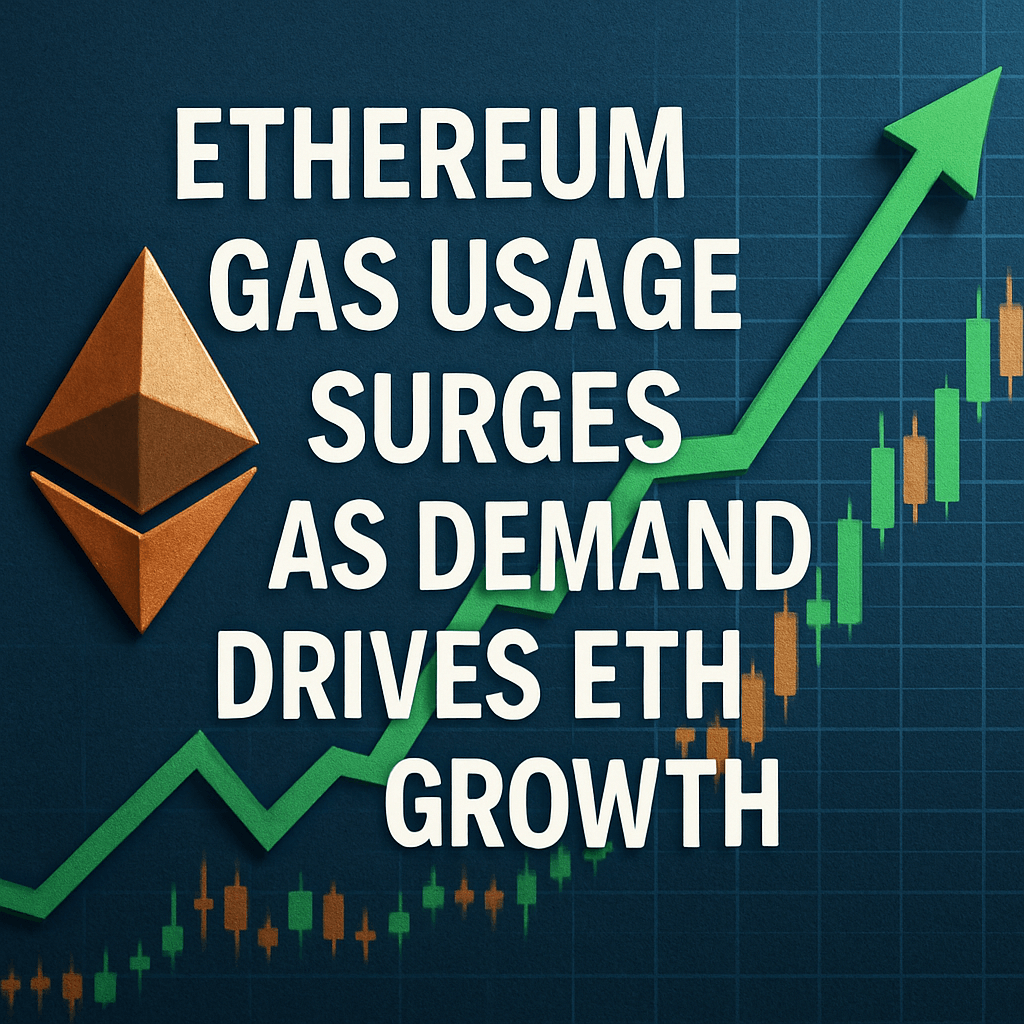Ethereum Gas Usage Surges as Demand Drives ETH Growth

Ethereum (ETH) is once again at the center of crypto markets as daily gas consumption climbs to unprecedented levels. Despite trading just below the key $2,700–$2,800 resistance zone, on-chain data suggests robust, structural demand for network resources. Long-term metrics, upcoming protocol upgrades and layer-2 adoption collectively point to a stronger fundamental base that could propel ETH beyond current technical ceilings.
Ethereum’s Price Consolidation Below $2,800 Resistance
ETH has repeatedly tested the $2,700–$2,800 band since early February without securing a decisive daily close above it. Currently trading near $2,620, the token remains range-bound between key moving averages:
- 34-period EMA at $2,366
- 50-, 100- and 200-day SMAs supporting between $2,070 and $2,690
Volume has dipped slightly since May’s rally, signaling short-term hesitation. Yet, bulls are holding the $2,550 support and forming higher lows—classic signs of accumulation ahead of a breakout.
Record Gas Usage Underscores Structural Demand
“Ethereum’s daily gas usage has risen steadily since 2016, reflecting genuine network adoption rather than speculative cycles,” on-chain analyst Ted Pillows noted on X.
Data from Glassnode and CryptoQuant confirms average daily gas used surpassed 117 million units this month, compared to ~95 million a year ago. This growth is driven by:
- Decentralized Finance (DeFi): TVL across lending, DEXs and derivatives protocols now exceeds $70 billion, up over 30% year-on-year.
- NFT & Gaming: Daily unique addresses interacting with ERC-721/1155 contracts climbed 18% in Q2.
- Smart Contract Deployments: Over 1,200 new contracts created weekly, up from ~900 last quarter.
Impact of Shanghai/Capella Upgrade on Network Economics
The April 2023 Shanghai/Capella “withdrawals” upgrade unlocked staked ETH liquidity, boosting capital efficiency. In the weeks following, on-chain gas usage temporarily spiked as validator operators and institutional custodians rebalanced positions. Additionally, the continued EIP-1559 burn mechanism has made ETH partially deflationary. According to DeFi researcher Lucas Haas, “Nearly 2.3 million ETH have been burned to date, removing ~1.1% of supply and increasing fee pressure on demand-intensive transactions.”
Layer-2 Adoption and Gas Efficiency
Rollups such as Arbitrum, Optimism and zkSync are handling more transactions off-chain, yet still require hub data settlement on Ethereum’s mainnet. As of this quarter:
- Arbitrum processes over 4 million transactions per day, increasing daily L2 gas fees by 12%.
- Optimism’s OP Mainnet hit a new record of 3 million daily txs in June.
- EIP-4844 (Proto-Danksharding) is slated for late 2024, promising further base-layer throughput gains and lower L2 costs.
These layer-2 advances not only improve user experience but funnel aggregate fees back into Ethereum, reinforcing long-term network value.
Technical Outlook: Key Levels and Breakout Scenarios
The next few sessions are crucial. A sustained daily close above $2,800 would confirm a bullish reversal, opening paths to:
- $3,000–$3,200 as the initial target zone
- Potential extension toward $3,500 if on-chain demand & volume converge
Conversely, a drop below $2,550 risks retesting the 50-day SMA near $2,370. Traders should watch the Relative Strength Index (RSI) and On-Balance Volume (OBV) for momentum confirmation.
Developer Activity and Ecosystem Health
Ethereum remains the leading smart contract platform by developer count, according to Electric Capital’s 2024 Developer Report. Monthly active developers surpassed 8,800 in Q2, up 15% year-on-year. Key growth areas include:
- Decentralized Identity (DID): Emerging standards like ERC-725/735 driving new use cases
- Tokenization: Real-world asset pilots on Centrifuge and tokenized commodities
- Privacy Layers: Advancements in zero-knowledge proofs enhancing confidentiality
Conclusion: Demand-Driven Fundamentals Point to Upside
While Ethereum’s price remains capped below $2,800, on-chain metrics—from gas usage and fee burns to layer-2 throughput and developer growth—paint a bullish long-term narrative. Should ETH break and hold above the critical resistance zone, it may ignite the next wave of altcoin rallies, consolidating its leadership in decentralized finance, NFTs and the broader Web3 stack.
“Structural demand for gas and continuous protocol upgrades are the real catalysts that will drive ETH beyond nominal resistance levels,” concludes Ted Pillows.